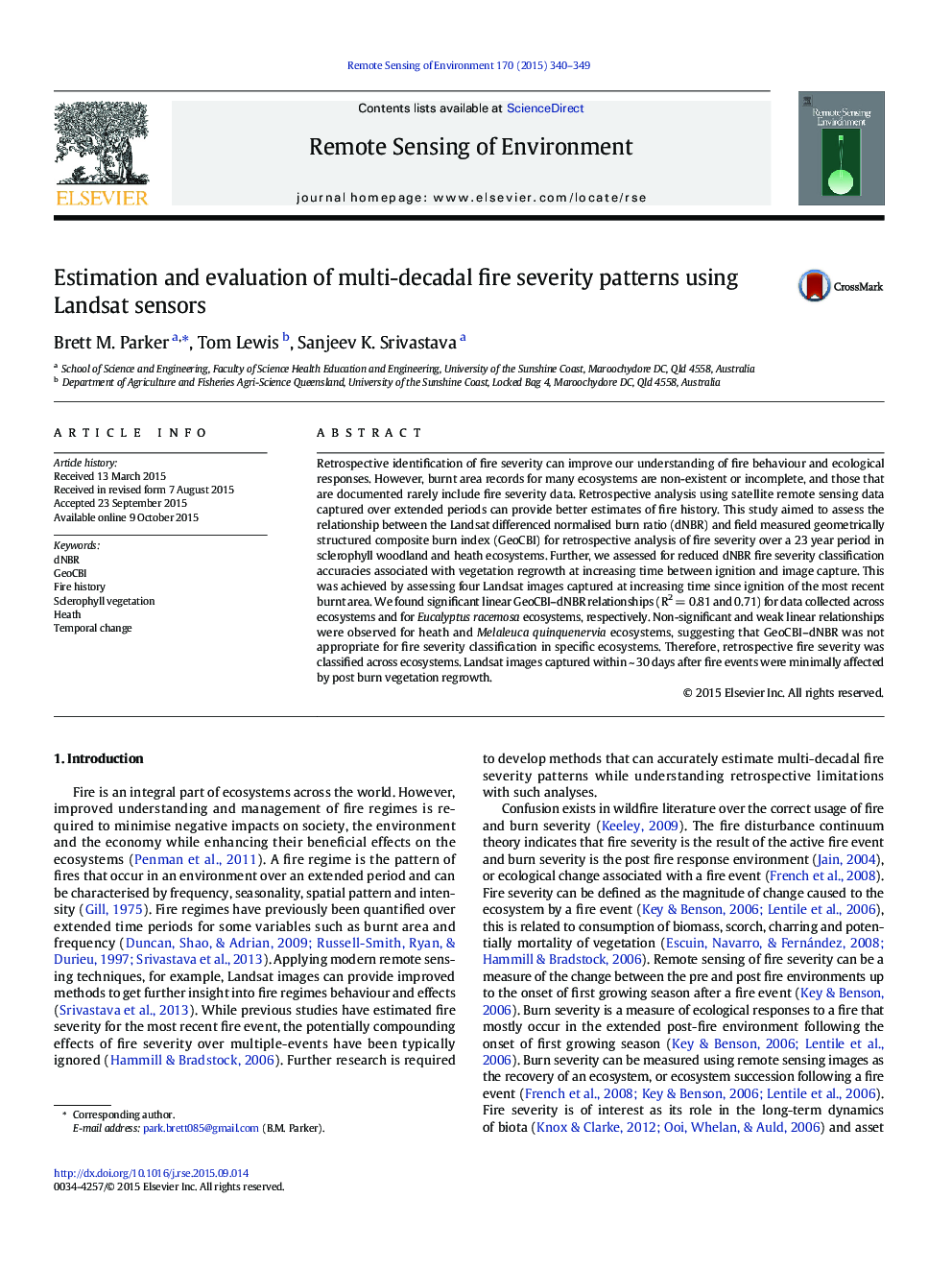| Article ID | Journal | Published Year | Pages | File Type |
|---|---|---|---|---|
| 6345539 | Remote Sensing of Environment | 2015 | 10 Pages |
Abstract
Retrospective identification of fire severity can improve our understanding of fire behaviour and ecological responses. However, burnt area records for many ecosystems are non-existent or incomplete, and those that are documented rarely include fire severity data. Retrospective analysis using satellite remote sensing data captured over extended periods can provide better estimates of fire history. This study aimed to assess the relationship between the Landsat differenced normalised burn ratio (dNBR) and field measured geometrically structured composite burn index (GeoCBI) for retrospective analysis of fire severity over a 23Â year period in sclerophyll woodland and heath ecosystems. Further, we assessed for reduced dNBR fire severity classification accuracies associated with vegetation regrowth at increasing time between ignition and image capture. This was achieved by assessing four Landsat images captured at increasing time since ignition of the most recent burnt area. We found significant linear GeoCBI-dNBR relationships (R2Â =Â 0.81 and 0.71) for data collected across ecosystems and for Eucalyptus racemosa ecosystems, respectively. Non-significant and weak linear relationships were observed for heath and Melaleuca quinquenervia ecosystems, suggesting that GeoCBI-dNBR was not appropriate for fire severity classification in specific ecosystems. Therefore, retrospective fire severity was classified across ecosystems. Landsat images captured within ~Â 30Â days after fire events were minimally affected by post burn vegetation regrowth.
Keywords
Related Topics
Physical Sciences and Engineering
Earth and Planetary Sciences
Computers in Earth Sciences
Authors
Brett M. Parker, Tom Lewis, Sanjeev K. Srivastava,
